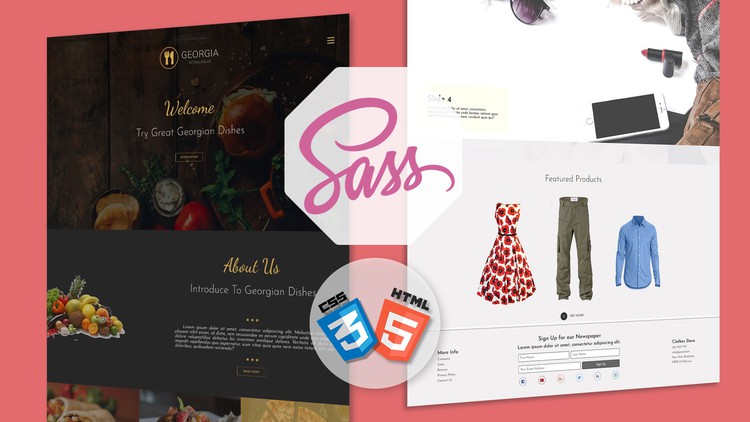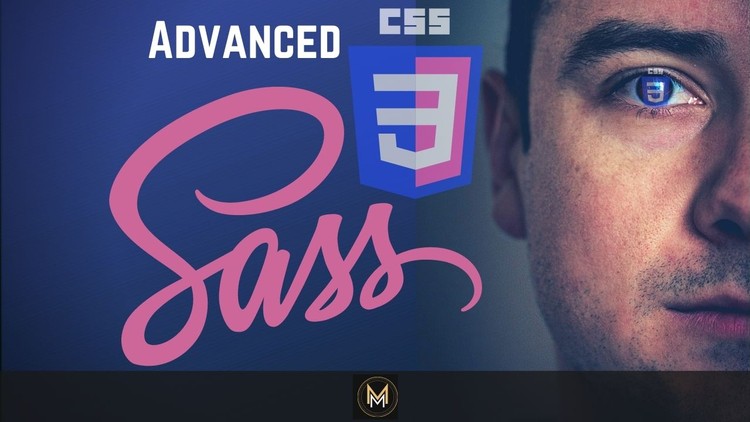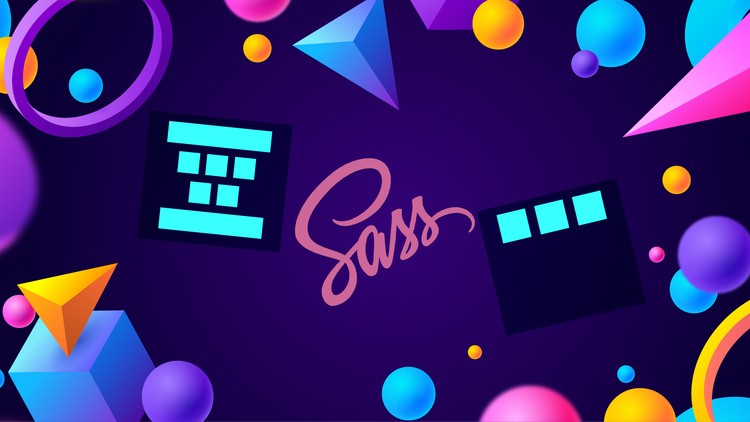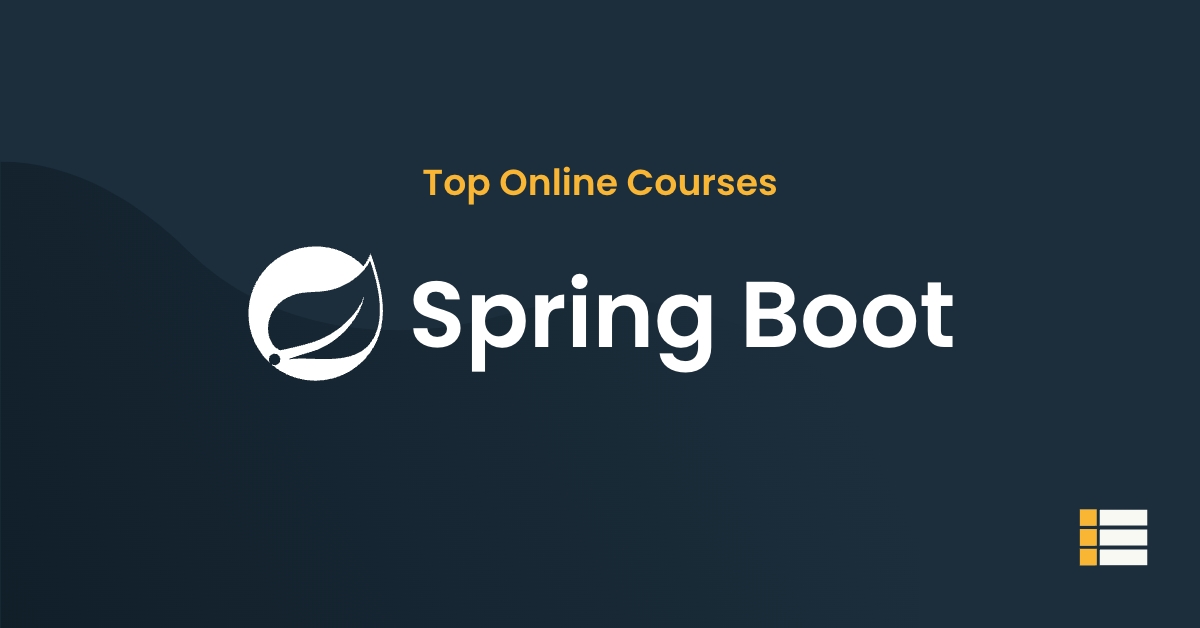Are you looking to level up your web development skills? If so, you should consider learning Sass.
Let’s explore the benefits of learning Sass and why it’s essential for any web developer.
Table of Contents
Learning Sass Online: A Student’s Guide
Introduction to Sass
Sass (Syntactically Awesome Style Sheets) is a dynamic stylesheet language that helps developers and web designers create efficient, maintainable, and reusable code.
With Sass, developers can write stylesheets more quickly, with fewer errors, and with a consistent syntax. Sass is an extension of CSS3, adding features such as variables, nesting, and mixins to the basic CSS structure.
Sass is a preprocessor, meaning it adds features to CSS before it is compiled into a browser-readable format. It’s also an interpreter, so it can compile changes to the stylesheet without having to reload the page.
This allows developers to quickly test changes and iterate on the design. At its core, Sass is a scripting language that uses the same syntax as CSS.
It allows developers to create variables, functions, and mixins, which can be used to create complex stylesheets without having to repeat code.
It also provides features such as loops, if-else statements, and functions, which make writing CSS much easier. Sass is an incredibly powerful language, and it can be used to create complex, responsive designs.
It is often used in conjunction with frameworks such as Bootstrap or Foundation, which makes it even easier to create responsive layouts. The most popular way to use Sass is through a CSS preprocessor such as Libsass or Ruby-Sass.
These tools allow developers to write their Sass code in a text editor, and then compile it into a browser-ready CSS file. This makes it easier to manage and maintain stylesheets, and ensures that they are always up-to-date with the latest web standards.
Sass is an incredibly powerful language, and it can be used to create complex, responsive designs.
With its robust features, it’s no wonder why Sass has become so popular among web developers. If you’re looking for an easy way to create efficient, maintainable, and reusable code, then Sass is the perfect choice.
Using Sass with Other Frameworks
When it comes to web development, frameworks have become increasingly popular over the years. Frameworks such as Bootstrap, Foundation, Materialize, and Semantic UI have become go-to tools for developers who need to quickly and easily create responsive websites.
While these frameworks are great for creating simple, quick sites, they also have their limitations. Fortunately, Sass can be used to extend the capabilities of these frameworks and create more complex, customized websites.
When using Sass with frameworks such as Bootstrap and Foundation, you can easily customize the look and feel of your website. For example, you can use Sass variables to change the default colors of your website or tweak the grid layout.
You can also easily create custom classes that are specific to your website. By using Sass with these frameworks, you can create a unique design without having to write all the code from scratch.
In addition to using Sass with frameworks, you can also use it in combination with other tools such as Gulp and Grunt. By using Gulp and Grunt you can automate tasks such as compiling your Sass files into CSS and minifying your code.
This makes it much easier to keep your code organized and makes it easier to maintain and update your website. Using Sass with frameworks and other tools can be a great way to quickly and easily create custom websites.
It also allows you to create styles that are consistent across multiple pages and makes it easier to maintain and update your code.
So if you’re looking for a way to quickly and easily create custom websites, using Sass with frameworks and other tools is definitely worth considering.
Sass learning resources
In this section, we’ll explore some of the best learning resources available for Sass.
- The official Sass website. On this website, you can find detailed documentation on the language, as well as tutorials and examples for getting started with Sass. The website also offers a comprehensive guide to the most popular CSS preprocessor, so it’s the perfect place to start.
- For those who want to dive a little deeper into the language, there are several books available on the subject. One of the best of these is Pragmatic Guide to Sass by Hampton Catlin and Michael Lintorn Catlin. This book covers the ins and outs of Sass in an easy to follow manner, making it perfect for both beginners and experienced developers alike.
- There are a number of websites and blogs dedicated to Sass. These are invaluable resources for learning more about the language, as they provide up-to-date information on Sass development and tips on how to use Sass effectively. Some of the best of these include Sass News, Sass Blog, and the Sass Way.
- Sass Tutorial for Beginners – CSS With Superpowers – Freecodecamp on youtube
- Learn SASS/SCSS tutorial – Javatpoint
- A Better CSS: LESS and SASS – Pluralsight
- The big SASS tutorial: what you need to know! – IONOS
Frequently Asked Questions
How long does it take to learn Sass?
For someone with a fundamental understanding of coding and web design, it could take as little as a few hours to understand the basics of Sass. For others with less experience, it could take a few days to a few weeks to become familiar with the syntax and commands. Ultimately, learning Sass can take as long or as little time as the individual learning requires.
Is Sass still worth learning?
Absolutely! Sass is still a popular language for creating stylesheets and it is a great tool for streamlining web development. It provides developers with a powerful and efficient way to quickly create and maintain stylesheets. It makes CSS more organized, maintainable, and extensible. It also helps reduce the amount of code needed for more complex websites, which makes Sass an excellent choice for those looking to build a more efficient and organized project.
Is Sass easy to learn?
Yes, Sass can be easy to learn, depending on your prior knowledge and experience with CSS. While some aspects of Sass such as nested selectors and variables can be tricky to master, its syntax is similar to that of CSS and basic Sass styling can be picked up fairly quickly. There are a number of online tutorials and resources available to help newcomers, and understanding the fundamentals of Sass can lead to faster, more efficient styling.
Is Sass still relevant?
Yes, Sass is still relevant today. It is a powerful and popular CSS preprocessor with a vibrant community of developers who continue to use and develop it, which ensures its continuing relevance. It allows web developers to write better, more maintainable code faster, and its features like variables, functions, and mixins make it a great tool for speeding up development cycles and making code more efficient. Despite the emergence of new CSS preprocessors, Sass remains popular today.
What is Sass and SCSS?
Sass (Syntactically Awesome Style Sheets) is a scripting language that is interpreted into Cascading Style Sheets (CSS). It is a preprocessor scripting language that is interpreted or compiled into CSS. SassScript is the scripting language itself and SCSS (Sassy CSS) is a syntax for SassScript. SCSS is a superset of CSS which means any valid CSS is valid SCSS as well. Sass and SCSS are used to write style sheets that are more concise and easier to maintain, as well as help keep style sheets more organized.
Conclusion
In conclusion, learning Sass online can be a great way to quickly become proficient in the web development language and take your web development projects to the next level.
With the resources available and the ease of use of Sass, there is no reason not to get started today.
With the right knowledge and practice, you can become a Sass expert in no time.


 Online course by
Code And Create
Online course by
Code And Create

 Online course by
Ashutosh Pawar
Online course by
Ashutosh Pawar

 Online course by
Brad Hussey
Online course by
Brad Hussey

 Online course by
Norbert B. Menyhart
Online course by
Norbert B. Menyhart

 Online course by
DigiFisk (Programming is fun)
Online course by
DigiFisk (Programming is fun)

 Online course by
Jonas Schmedtmann
Online course by
Jonas Schmedtmann

 Online course by
Muslim Helalee
Online course by
Muslim Helalee

 Online course by
Lawrence Turton
Online course by
Lawrence Turton

 Online course by
Akshay Kashyap
Online course by
Akshay Kashyap



